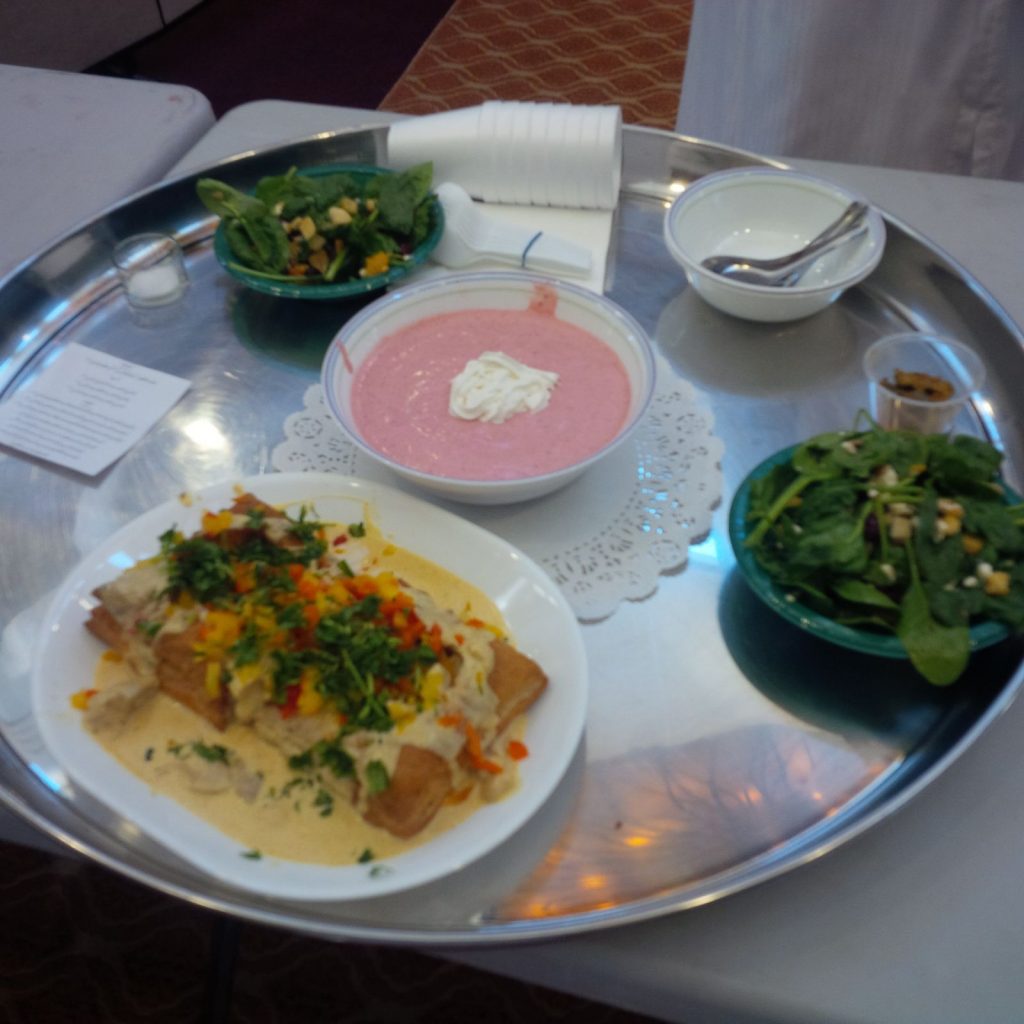
This is a guest post by Fatema Baldiwala.
Rushing to make it in time for all the deadlines that a mom of two busy teenagers has to meet, I have many times substituted quick, easy, convenient fast food substitutes for complete meals. Today was no exception, as I rushed to make it in time for maghrib namaaz; a protein bar was hurriedly placed in my boys’ hands. These meals are not the optimal nutrition that I want my kids to consume, but by default it is what we consume on the go.
Nutrition is something that’s very much in the forefront of my thoughts, when my stomach craves food in the fasting month of Ramadan. My kids are first generation Americans who do not have the cultural memory of food like I do: of home cooked meals, of steaming plates of spicy and tantalizing aromas that bring instant saliva to the mouth, of anticipatory forthcoming tastes, of warm pliable roti crumbling between the fingers, of the joys of communal eating with laughter of friends and family. In America, we have become consumers of “meal replacements”, fake duplicates that look like the real thing which promise all the nutrients that our body needs, yet cannot replace the real.
The irony of this situation hits me every time I enter the “jamaat khana”. The aromas are what assail me first, transporting me back to childhood memories of communal eating. The bhori thaal is resplendent with stacked food catering to our every taste. The goodness of the farm transformed into a variety of dishes, namely roti, curry, rice, and dessert, all downed with a sip of sparkling sherbet. Not only is the food tasty, home cooked, and nourishing, but is eaten leisurely amidst a small group of close friends sharing stories from their day and their lives.
Ifthari dinner begins with having a pinch of salt before starting on the three-course meal. Tradition believes that a pinch of salt will ward off 72 diseases. There is scientific truth in this as our bodies are constituted of salt and our very existence is founded on the discovery of salt. In ancient civilizations it was prized as much or even more than gold because of its medicinal and preservative values. After the pinch of salt comes the sweet dish. Sweetness is the most pleasing taste to the tongue and connotes an item as a rich source of energy. The sweet dish is followed by a meat curry. Curries are made by sautéed onion, garlic, and various spices. Chemists have identified this mix as containing powerful antibacterial components which can negate whatever dangerous bacteria there is left on meat. Furthermore, science has discovered a 5th taste, called “umami” which in Japanese means deliciousness. Curries are supposed to possess the taste of umami. Umami is identified in ripe tomatoes and onions, which are essential ingredients to curries. Umami works in synergy with other ingredients enhancing flavor and texture of a sauce. Curries are slowly cooked. The ingredients mix together in a huge closed pot, simmering gently, giving out its special welcoming aroma. Dinner ends as it started, with a pinch of salt.
Other Americans would marvel at this, first for our continuing tradition, of eating the same way as we have done from generation to generation, and at eating the same food, cooked the same way. Secondly, our choices are based on habit, culture, and taste rather than on any scientific research, as most American food with its extensive calorie count has become. Americans’ obsessive food neurosis has been influenced by a relatively newer field of food science that has overlapped their common sense and replaced traditional cultural food with inferior capitalistic-driven substitutes.
We Americans tend to be the unhealthiest people in the world. Diet-related diseases are an epidemic-sized issue for people living here. America has always been a country with choices, and we value choice over all else as evident by the sheer number of food varieties available. Furthermore, being a country of immigrants from all over the world, each immigrant community introducing it special dishes, we have a choice of cuisine from all over the world. The question, “what’s for dinner?” will usually elicit an array of varied choices, even if all of us are sitting down together for a meal. Even though each immigrant population has brought its own ways to the American table, none has been powerful enough to become the norm. The abundance in food choices has made us a country with no fixed cultural diet, which is ideal for the food industry.
The food industry benefits from having a demographic with no time to cook and a fading memory of their cultural food. The supermarkets are packed with aisle after aisle of quick meals from all over the world offering the convenience of being precooked and that can be consumed quickly. These meals have usually originated in a food scientist’s lab, rather than traditionally cooked and are processed chemical derivatives of the original. These substitutes or meal replacements may look and even smell like the home cooked version, but they leave you disillusioned after the first bite with a lingering aftertaste that leaves you unsatisfied.
In spite of technological advances, we are a population with less and less time on our hands. We are also a population vulnerable to particular fads exacerbated by the food industry (who are only interested in making a quick profit). Remember the famous Atkins diet, that created almost an overnight rejection of our most staple food, bread, and gave rise to a population of people suffering from carbophobia? Or the era when margarine outsold butter? Only to find out that margarine is one molecule away from a synthetic plastic and what we were spreading on our bread was a liquid form of plastic Tupperware. We go through oscillating ups and down, elevating one food, demonizing another till we are totally confused about what we should consume.
To the rescue of this confusion comes our Bhori thaal that encourages eating as a community. Where else can both the physical as well as the spiritual self come together as a whole? The starved body rejuvenates, taking comfort in our shared cultural heritage as we, as a people, partake of our ifthaar meal. We are thankful that at least in the evening, after a long summer day of fasting, we are blessed to be eating traditional foods that nourish not only our bodies but satisfies on a deeper level, awakening for an all too brief a moment a feeling of homecoming and belonging.
Fatima Baldiwala is a writer and a mother in Los Angeles.

